Epsom Salt can help them in a variety of ways, from keeping plants green and lush to promoting blooms!
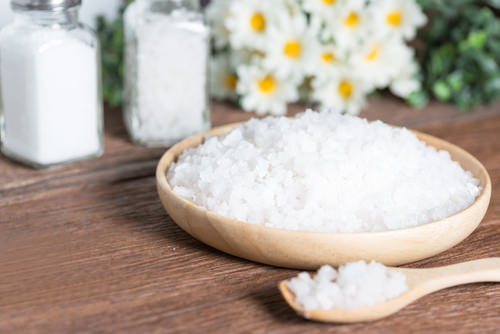
Here are some amazing advantages of using Epsom salt in any indoor plant you choose! It is easy and and cheap!
Have a look at some amazing Epsom Salt Uses In the garden here
Advantages of Using Epsom Salt for Houseplants
1. Promotes Nutrient Intake
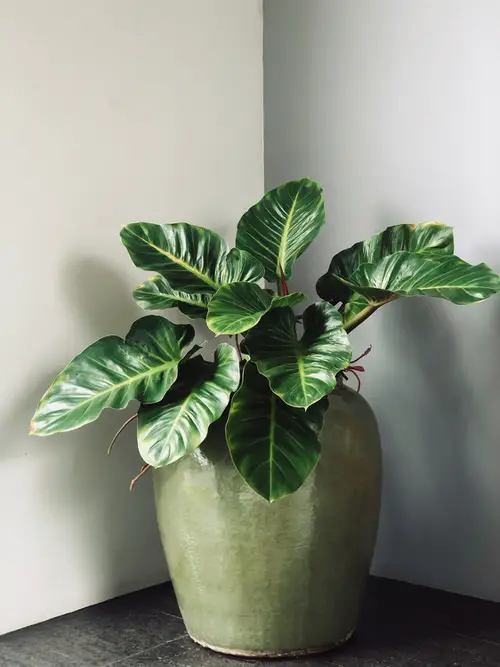
Epsom salt is very useful for your indoor plants as it encourages nutrient intake. This helps the plant to absorb more from the growing medium, resulting in better growth and green leaves.
Use 1 tablespoon in 1 gallon of water and use it on plants once in 3-4 weeks. You can also spray the solution on the foliage to maximize absorption. Plants like pothos and philodendron benefit the most from it.
2. It Helps to Minimize the Transplant Shock
Epsom salt is useful to minimize transplant shock while re-potting plants. Add 1 tablespoon of Epsom salt in a gallon of water and water the plants after re-potting. It will also eliminate the chances of wilting and leaf discoloration.
3. Keeping Ferns Lush
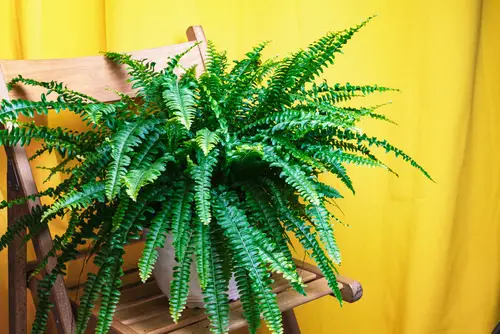
Magnesium and sulfur deficiency causes the ferns to turn pale and yellow. You can avoid this with Epsom salt to help ferns with chlorophyll production, healthy growth, and resistance against diseases and pests.
Add 2 tablespoons of Epsom salt in 1 gallon of water and spray once a month on the foliage when your ferns are growing actively.
We have a detailed article on how Epsom salt helps ferns here
4. Prevents Leaf Curling
According to a report by the South Dakota State University, Magnesium deficiency affects lower leaves the most–causing curling, interveinal chlorosis (leaf veins stay green while the regions between them turn yellow). Older leaves lose their green color except in the veins. Interveinal chlorosis can lead to necrosis (death of tissue) of the affected areas.
Leaves also curl upward or inward due to sulfur deficiency. To combat these issues, all you have to do is to spray the leaves with an Epsom salt solution diluted with water.
5. Eliminates Yellowing of Leaves
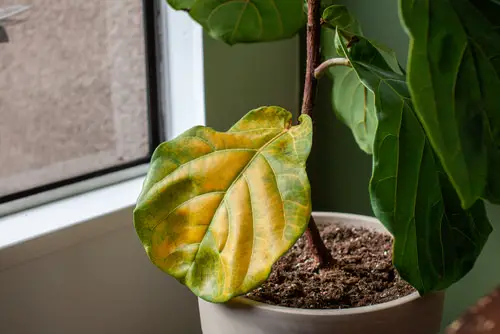
A report by the Washington State University presents the fact that the highly soluble nature of Epsom salt relieves sulfur deficiency in plants, eliminating yellowing of leaves.
Add 1 tablespoon of Epsom salt in a gallon of water and use it as a spray on the foliage or water the plant once in 3-4 weeks to make the leaves healthy again.
6. Makes Foliage Greener
A report by the University of Minnesota Extension presents the fact that magnesium helps to activate specific enzymes, and its deficiency can result in loss of healthy green color, and the plant develops yellowing between the veins toward the center of the leaf.
Magnesium makes the foliage dense and greener by boosting chlorophyll production, which adds to the richness and colors of leaves. Spraying the leaves with a solution of Epsom salt and water (1 tablespoon in a gallon of water) will keep them lush and full of color!
7. Kills Pests Naturally
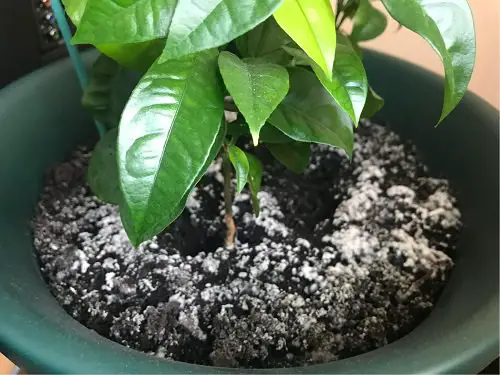
Epsom salt causes dehydration in slugs, snails, and other bugs and kills them fast. Sprinkle it directly on the pests when you spot them. You can also layer Epsom salt around the container to keep them at bay.
8. Promotes Blooming
You can promote blooming in pansies, African violets, peace lily, azaleas, petunias, roses, and impatiens by adding 1 tablespoon of Epsom salt in a gallon of water and using it to spray directly onto the foliage once every 15-20 days.
You can also water the plants with this solution once in 3-5 weeks.
9. Keeps Hostas Healthy and Green
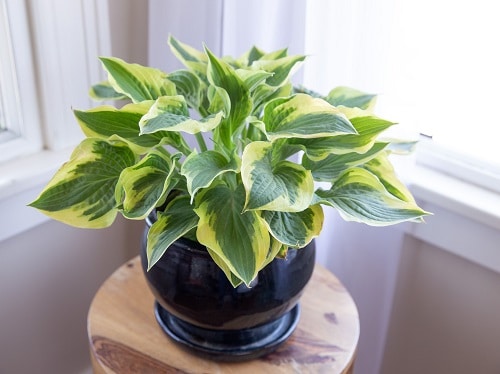
Magnesium in Epsom salt plays a vital role in water retention and in the creation of chlorophyll, both of which play an active role in the process of photosynthesis.
Mix 2 tablespoons of Epsom salt in 1 gallon of water and spray once a month on the foliage to make hostas lush and green.
Have a look at how Epsom salt helps hosta to grow here
10. Use it While Growing Plants in Water
Growing plants like herbs and houseplants in water is quite popular, and Epsom salt will help to keep them fresh and healthy for a long time.
Adding a pinch of Epsom salt once or twice a month will greatly help them to absorb nutrients, making cut flowers stay fresh for longer and helping plants and herbs with healthy growth.



Will Epsom salts be good for my house violets as well?
don’t spray on the leaves of African Violets
What sort of Epsom salt to buy. From garden centre or bath salt from shops
Buy the one for plants to make sure that there are no added ingredients that might be harmful to plants. You can find it on amazon as well
The off brand in beauty part of Walmart..
You will see it says plant food.. it’s a blue and while bag ..
Is epsom good for Xmas cactus. And yucca trees.
Is it good for aspidestra